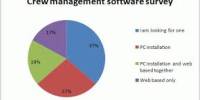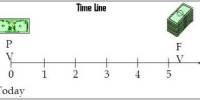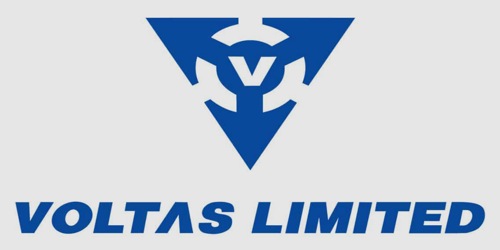Inventory Procurement Policy:
Inventory of the firm mainly consists of raw materials of the products and packing materials.
Square Textile Ltd. mainly concentrates on inventory of raw materials and packing materials. But its inventory stocks consists of raw materials, packing materials, raw materials in transit, work-in-process, finished goods, waste cotton, spares& spares in transit.. Inventories are bought from foreign market as well as from local market. All packing materials are purchased from local market.
Reasons for holding different kinds of inventory:
Reasons for holding raw materials inventory:
- It makes production scheduling easier
- It helps to avoid price changes for these goods.
- The firm may keep extra raw materials inventory to hedge against supply shortages
- The firm may order and keep additional inventories of raw materials to take advantage of quality discount.
Reasons for holding work in process inventory:
- A major reason that firm keeps work in process inventory beyond the minimum level is to buffer production.
Reasons for holding finished goods inventory:
- One reason to keep finished goods inventory is to provide immediate service to the customers.
- A second reason to keep finished goods inventory is to stabilize production.
Costs that are considered in inventory procurement policy:
Different types of costs are discussed in the following paragraphs:
- Cost directly proportional to amount of inventory held:
Carrying cost of inventory or holding cost of inventory. The formula for this type of costs are Cost = (a) (amount of inventory)
Where, a is a coefficient representing the sum of all costs that are directly proportional to the level of inventory.
- Cost not directly proportional to the amount of inventory held:
There are group of costs that varies with inventory size but not in direct proportionality. The formula for these costs is:
Cost = f (inventory level)
Where, f (inventory level) means that cost is a function of inventory level, with the particular mathematical relationship depending upon the type of cost being considered.
- Cost directly proportional to the number of orders:
There are costs to the ordering, delivering and payment processes. These costs depend directly on the number of times the orders are placed and received. Cost of this sort include set o[ costs on machines to produce inventory, costs of generating a purchase order for the inventory, costs of writing a cheque and mailing it in payment for the order, fixed costs of unloading the order and so forth. The formula for this type of cost is:
Cost = © (number of orders)
Where, c is a coefficient representing the sum of all the costs in this type.
- The price per unit of inventory obtained:
Due to quantity discounts and economics of scale in production, the price per unit of goods purchased or produced for inventory may vary with the amount ordered. The formula for the total cost of the inventory is:
Cost = Pa S
Where Pa is the unit price for the quantity ordered by the firm and S is the yearly usage of the good.
- Stockout cost:
Another cost that is dependent on the firm’s inventory strategy is stockout cost. Stockout cost occurs when immediate service is required but inventory is unavailable.
Usually a minimum amount of spoilage occurs for holding inventory. But ordering cost and carrying cost of inventory is considerable in case of materials purchased from foreign market. Materials that are purchased from local market incur less amount of both direct and indirect cost of holding inventory.
Stock out cost is a common problem for the firm. This happens because of low predictions about market demand. A good prediction about market demand and safety stock position can alleviate the problem. But the firm does not have a good policy for maintaining adequate safety stock. Another problem for not meeting up the market demand is a long lead time, which helps to fail the fulfillment of demand.
Inventory Store Management:
The management of inventory is one of the oldest concerns of management science. Like all other assets inventory represents a costly investment to the firm. There are some reasons why a firm may want to carry inventory. Square Textiles Ltd. follows the periodic inventory system for managing the inventory records. The problem that they face with stocks is somewhat related to dynamic inventory problem where the goods have value beyond the initial period; they do not lose their value completely over time. The process of followed by Square textiles Ltd for managing inventory is as follows:
Where the cost of merchandise purchased during the year is debited to a Purchases account, rather than to the inventory account. When merchandise is sold to a customer, an entry is made recognizing the sales revenue, but no entry is made to reduce the inventory account or to recognize the cost of goods sold. The inventory on hand and the cost of goods sold for the year are not determined until year end. At the end of the year, all goods on hand are counted and priced at cost. The cost assigned to this ending inventory is then used to compute the cost of goods sold. The only computation that is kept up to date in the accounting records is the purchases account. The amounts of inventory at the beginning and end of the year are determined by annual physical observation.
Sources and level of risk in inventory management:
Uncertainty plays a significant role in inventory management. Uncertainty usually involve
a. Lead time during creation lag
The creation of inventory whether on cash or credit purchase requires some time to be delivered. This time from order placing to delivery at firms shipping dock is called creation lag. If this time lag prolongs than expected then it affects the overall inventory turnover ration of the firm. Hartals, and strikes particularly in the port area make the creation lag possible to be longer. For this reason Square Textile considers this lag significantly while making any inventory decision.
b. The level of demands during the storage lag:
Once an inventory is delivered, it is not out right sold out. It requires some time for these inventory to be resold before that it must be either subject to further production or otherwise waiting for being sold. This time from delivery by supplier to delivery to the customers are known a storage lag. This lag can further subject to production lag. Square Textile tries to forecast the market demand of its goods and then takes inventory decision to minimize risks.
Inventory Valuation Method:
The break up of Inventory Stock of Square Textile ltd for the year 2004 is as follows:
The break up is under:
| Raw materials | Tk.336456255 |
| Raw material in transit | 2442980 |
| Packing Materials | 2898296 |
| Work in Process | 6570867 |
| Finished Goods | 20740646 |
| Spares at Store | 32539232 |
| Spares in Transit | 698685 |
| Waste Cotton | 3102848 |
| taka | 405449809 |
The basis of inventory valuation is as follows:
Inventory stocks comprise of raw materials, packing materials, raw materials in transit, work-in-process, finished goods, waste cotton, spares& spares in transit. Stocks are valued at the lower of cost and net realizable value. Value of stock other than stock of finished goods represents weighted average cost. Finished goods are valued at lower of cost or net realizable value and include allocation of production overheads while works in process are valued at material cost.
Factors in deciding inventory level:
Before deciding the level of inventory to be hold, the firm considers the following factors:
A} Sales Forecasts: Sales forecast helps the firm to plan for production which ultimately helps in deciding the level of inventory to hold.
B} Production Plan: As described above, the production or sale plan of a firm determines how much inventory will be required by a firm for its production or sales purpose.
C} Socio Economic Factors: Some factors fiscal and monetary policy of the country, political instability are considered by the square textile to forecasts sales volume which finally affect the inventory management decision.
D} Technological Consideration: Inventory in textile industry involves highly sophisticated items. Hence the possibility of obsolescence enhances and so the level of inventory should be kept low.
















